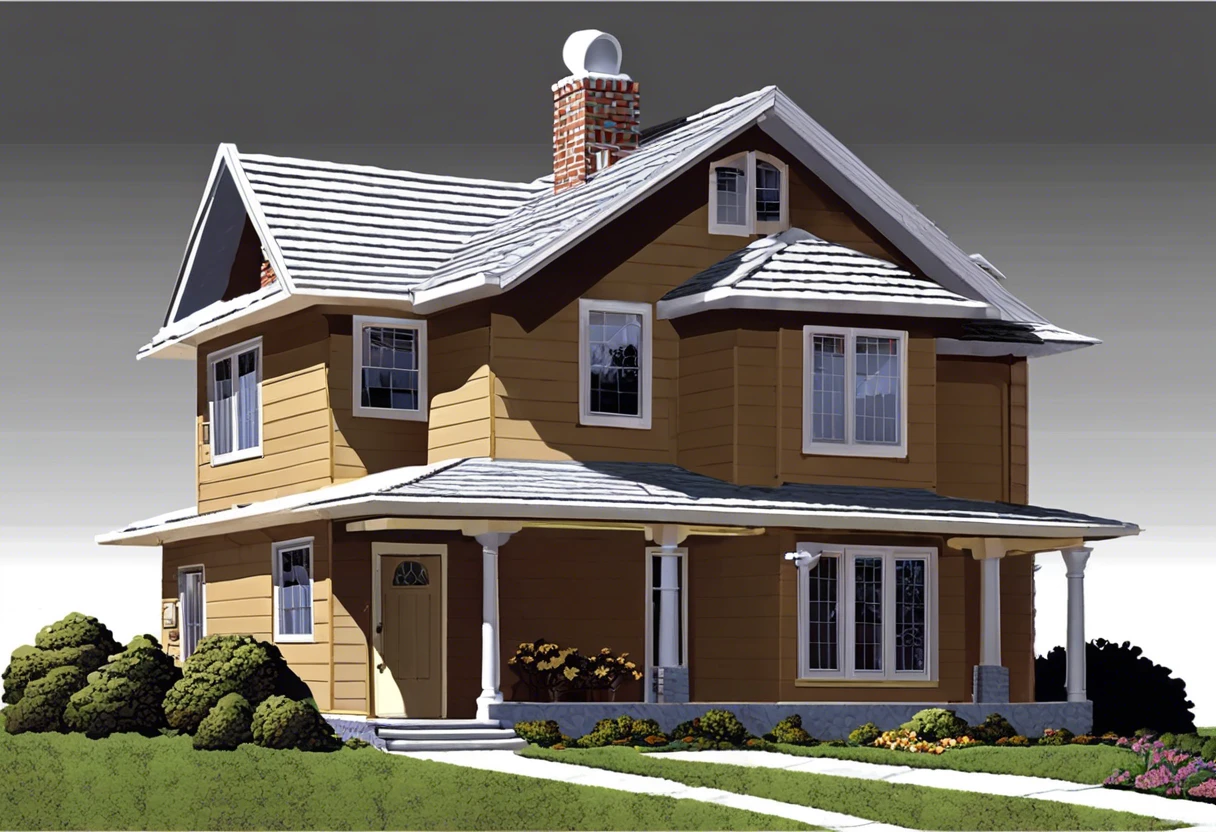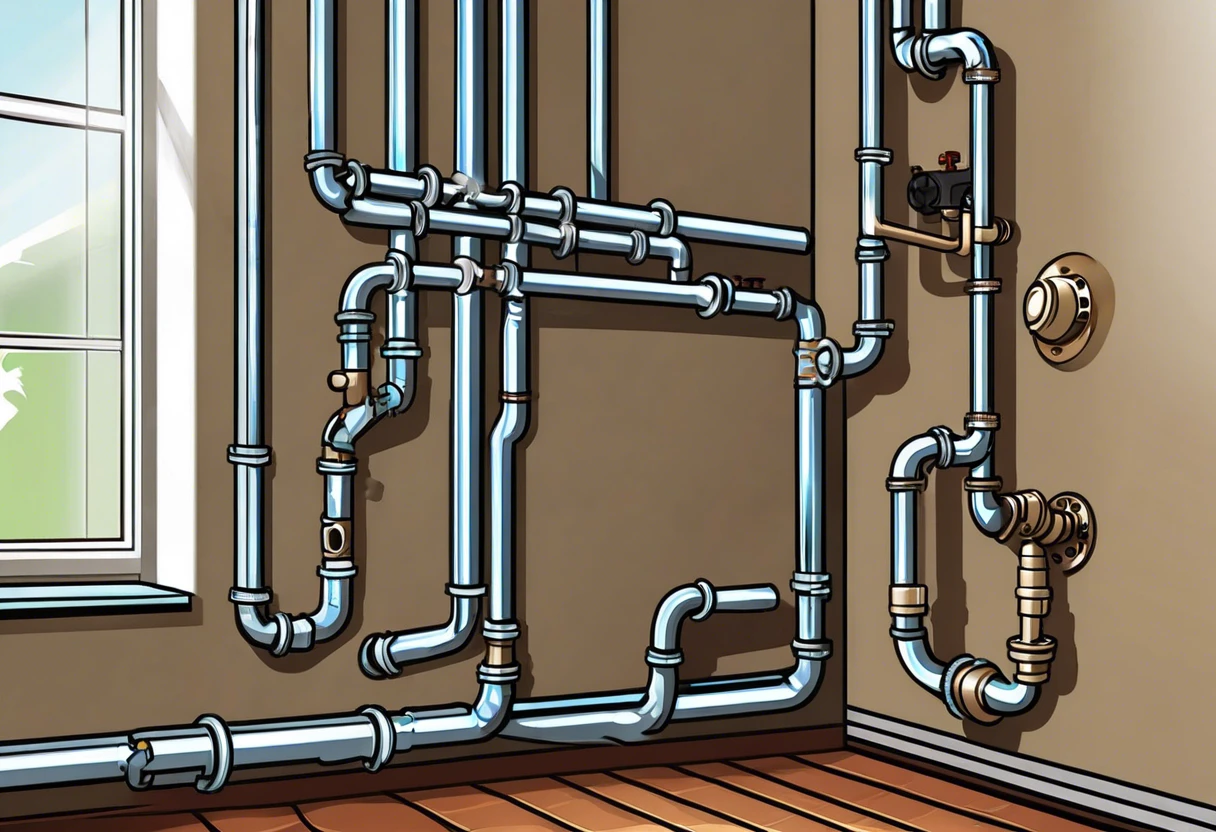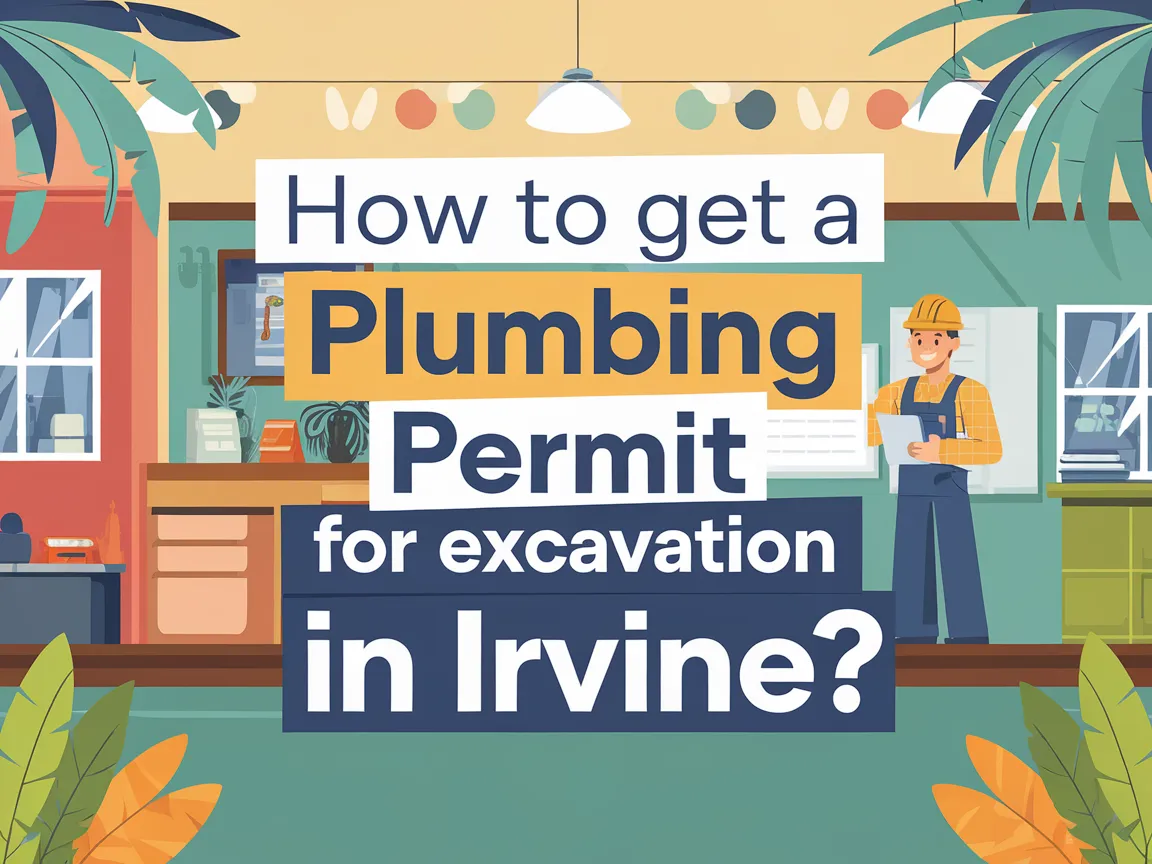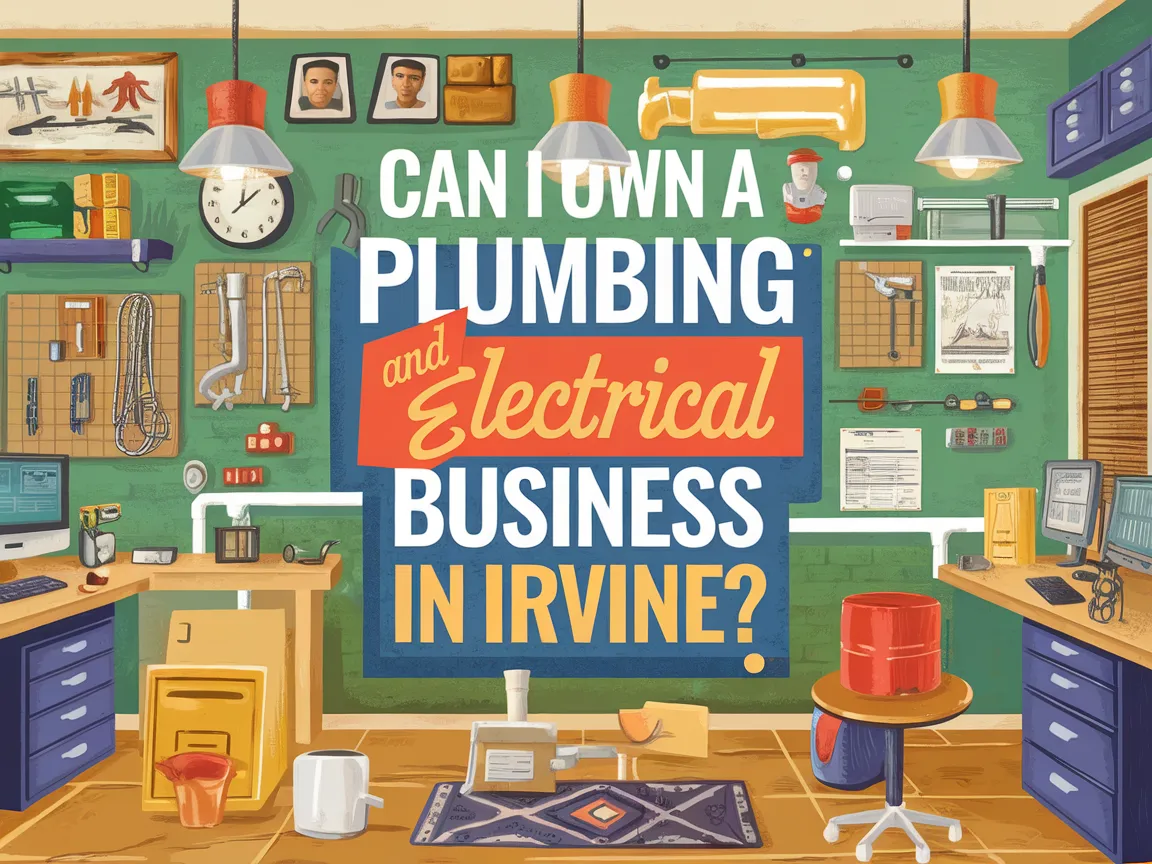When Was Polybutylene Plumbing Used?
Last Updated: February 27, 2025
Polybutylene plumbing is a type of plastic pipe used in many homes. Think of it like flexible straws for your water, but not all straws are good for drinking.
When I’m chatting with folks in Irvine, they often wonder about when was polybutylene plumbing used. With my hands-on experience, I’m here to help you understand its history and implications.
This article will cover the history of polybutylene plumbing, its identification, replacement costs, important considerations, and when to call in a pro.
Table of Contents
- When Was Polybutylene Plumbing Used?
- What is Polybutylene Plumbing?
- Before You Start… Important Considerations
- How to Identify Polybutylene Plumbing
- How Much Does Polybutylene Plumbing Replacement Cost?
- What Are the Factors Affecting Polybutylene Plumbing Replacement Costs?
- Special Considerations When Dealing With Polybutylene Plumbing
- When to Seek Professional Help for Polybutylene Plumbing Issues
- Frequently Asked Questions
- Final Thoughts on Polybutylene Plumbing Usage and Implications
- Additional Resources
When Was Polybutylene Plumbing Used?
Polybutylene plumbing was commonly used in homes from the late 1970s until the mid-1990s. It gained popularity due to its low cost and ease of installation. However, issues with its durability led to widespread replacement starting in the late ’90s.
What is Polybutylene Plumbing?
Polybutylene plumbing is a type of plastic pipe that was popular for residential water supply lines. Manufactured from a specific type of polymer, its chemical properties make polybutylene flexible and lightweight. However, they can literally fail over time when exposed to certain water additives. Studies show there’s a 40% failure rate after just 10 years of use, primarily due to chlorine and other chemicals breaking down the material, which can lead to leaks and bursts.
I used it at work mainly for affordable plumbing solutions during the late 1970s to early 1990s. This was a time when it was touted as the next best alternative to traditional materials like copper. Because of its premature failures, home buyers in Irvine often face costly replacement bills averaging from $2,000 to $5,000 USD, depending on the scope of the installation. If your home either predates 2000 or has polybutylene pipes, it’s smart to regularly inspect them—being proactive can prevent big headaches down the road. When unexpected plumbing issues arise, you might need to call an emergency plumber to address potential pipe damage quickly.
Before You Start… Important Considerations
What do you need to know for identifying polybutylene plumbing?
- Flashlight: You’ll need a powerful flashlight, like the Streamlight 66318 (Around $39), to inspect dark spaces such as pipes under your home. It’s crucial for spotting polybutylene pipes in tight or poorly lit areas.
- Pipe Cutter: Grab a pipe cutter, like the RIDGID 23488 (About $24), for slicing through tough plumbing. You need this to easily cut out sections if you discover that troublesome material.
- Measuring Tape: Get a reliable measuring tape, such as the Stanley 33-725 (Approximately $9). You need precise measurements to assess how much piping you’ll replace, which could save you hella bucks.
- Protective Gear: Equip yourself with safety gloves and goggles, like Mechanix Wear (Around $20). Safety is key when handling plumbing, even if it’s just a narrow exploration of polybutylene piping.
So far we covered critical factors to consider before starting. Let’s look at how to identify polybutylene plumbing next.
Also See: Is Liquid Plumber Safe for Toilets? Find Out Here

How to Identify Polybutylene Plumbing
Inspect Your Plumbing System
Check for Manufacturer Identifications
Consult Plumbing Documentation or Reports
Now, we’ll cover the steps to figure out when polybutylene plumbing was commonly used in homes.
-
Identify Pipe Material
First, take a close look at your pipes. Polybutylene pipes usually have a dull gray color, are often flexible, and have diameters that generally range from 1/2 inch (1.27 Cm) to 2 inches (5.08 Cm).
Look for any markings on the pipe such as “PB” and a number indicating the manufacturer’s identification, which can pinpoint when they manufactured the pipes in the USA, mainly spanning from the late 1970s to the mid-1990s. Interestingly, pipe identification techniques have evolved significantly since the early days of indoor plumbing’s historical development.
-
Check Fittings and Connections
Next, examine any fittings or joints related to your plumbing. Polybutylene often used polyethylene connector fittings, which can still be found throughout systems installed in homes during this period. If you encounter stubborn pipe connections or suspect potential leaks, professional plumbers can help diagnose and resolve complex plumbing challenges.
This can help you gather info about a system that may still have polybutylene installed, even if it was transitioned to copper or another material during renovations.
-
Review Home Ownership Documents
Let me tell you, during home inspections, property disclosures typically provide insight. Dive into reports and documentation, as past homeowners might list important details regarding remodeling or plumbing modifications.
This might highlight when exactly polybutylene plumbing was used and when it was replaced or identified as problematic, shedding light on some crucial choices made in the past.
Pro Tip: Inspect silencers and annotations; they might be hidden but could save you a lot of headaches when dealing with the complexities related to polybutylene plumbing.
That covers how to spot polybutylene plumbing. Let’s now take a look at the costs of replacing it.
How Much Does Polybutylene Plumbing Replacement Cost?
Replacing old polybutylene plumbing can set you back anywhere from $1,500 to $10,000, depending on your home’s size and the work’s complexity. One thing’s for sure: most jobs take about two days when done by pros, while DIY projects might stretch into the weekend and beyond, leaving you with tasks to tackle as you go. And don’t forget the unexpected costs—the deeper you dive, the more you’ll find, so it’s smart to budget an extra 10-20% just to be safe in our beloved Irvine heat. If you’re wondering about the longevity of your pipe materials, PVC plumbing lifespan matters significantly in home maintenance planning.
Cost Breakdown Of Polybutylene Plumbing Replacement
| Item | Low Estimate ($) | High Estimate ($) |
|---|---|---|
| Materials & Supplies | 500 | 2,000 |
| Professional Labor | 1,000 | 5,000 |
| Permits & Inspections | 100 | 500 |
| Unexpected Expenses | 150 | 1,500 |
| Total Estimated Cost | 1,850 | 10,000 |
You should now have a good understanding of polybutylene plumbing replacement costs. In the next part, we’ll discuss cost influencing factors.
What Are the Factors Affecting Polybutylene Plumbing Replacement Costs?
So, what factors determine the usability timeline for polybutylene plumbing in your home? Let’s break it down.
-
Installation Trend Periods: Polybutylene plumbing really peaked in popularity from the 1970s to early 1990s. If your house was built during this time, it might be time to check your pipes. Homeowners should be aware of potential risks and professional soldering techniques for repairs.
-
Geographic Location: In humid areas, moisture can speed up pipe degradation. That means homeowners in muggy climates tend to replace these pipes sooner.
-
Property Age: Homes built when polybutylene was all the rage are more likely to face wear issues. If yours is one of them, keep an eye out for leaks!
-
Public Perception: Once people learned about potential health risks, many chose to replace polybutylene pipes early, even if they were still fairly new. Staying informed is key!
That covers the factors influencing polybutylene plumbing replacement costs. Let’s now take a look at important considerations for polybutylene plumbing.

Special Considerations When Dealing With Polybutylene Plumbing
Let’s dive into some key factors if you’re dealing with polybutylene plumbing in your Irvine home.
- Age of the System: Most polybutylene plumbing was installed between 1978 and 1995. If you’ve got a home from this era, it might have these pipes.
- Erosion Issues: Polybutylene can deteriorate when exposed to chlorine in water, which is often found in OC municipal systems. Check for flaking and weak spots—those can lead to leaks.
- Pipe Size: Common sizes are ¾ inch (19 Mm) and ½ inch (13 Mm). If you’re replacing these, consider the local building codes, which may dictate the size based on your area or home structure.
- Flare Connections: Traditional brass fittings can corrode under stress. Make sure you’re using compatible parts for any repairs.
- Long-term Replacement: If you’re planning to switch out the whole system, budget for alternatives like copper pipes ($2–$6 Per Linear Foot, 0.3048 Meters) and PEX piping ($0.50–$3 Per Foot, 0.3048 Meters). These might be better investments in the long run.
When to Seek Professional Help for Polybutylene Plumbing Issues
If you’ve got polybutylene plumbing, you’ve landed in a tricky situation. First off, reach out to an expert if you notice any leaks or signs of wear. Look for a pro who specializes in this type of plumbing services—you want someone who really knows the ins and outs. In my experience, the best pros are always prompt, friendly, and detail-oriented. Be on the lookout for weird discoloration in your water or spots on your walls; that’s usually a red flag! And don’t forget to check if they’re licensed right here in the OC and insured. You usually get what you pay for—cheaper doesn’t always equal better. Trust me, I’ve seen it go south for those who tried to cut corners! Based on what I’ve learned, catching issues early saves you money and headaches down the line. If you’re curious about the professional journey of becoming a skilled plumber, check out the path to plumbing expertise.
Frequently Asked Questions
What is the Average Lifespan Of Polybutylene Plumbing?
Polybutylene plumbing typically lasts around 10 to 15 years. Unlike copper or PVC, which can last much longer, polybutylene is prone to breakage due to chlorine exposure in water. In sunny Irvine, this issue may be even more pronounced, as water quality varies across neighborhoods.
How Do I Know if My Home Has Polybutylene Pipes?
To figure out if your house has polybutylene pipes, look for pipes that are gray and feel flexible. This type was common in the ’80s and early ’90s. If your home dates back to that era, there’s a good chance you’ve got these pipes lurking around. Before making any modifications, you might want to check local permit requirements for plumbing work.
What Are the Common Problems Associated With Polybutylene Plumbing?
The common problems with polybutylene plumbing include leaks, end caps that fail, and overall breaking down as the years go by. In places like the OC, where the soils can shift, these issues become even more critical, leaving you with potentially high repair costs. If you’re struggling with pipe connections, you might want to explore techniques for loosening stubborn pipes.
Is Polybutylene Plumbing Safe?
Polybutylene plumbing isn’t considered safe. It can become brittle and lead to water damage in your house. Due to its vulnerabilities, I often recommend my clients reconsider keeping it, especially in a humid climate; the last thing you want is a ruinous leak. If you’re experiencing persistent drainage issues with older pipes, you might want to explore professional drain snaking solutions to prevent potential water damage.
Do Polybutylene Pipes Need to Be Replaced?
Yes, polybutylene pipes need to be replaced as their performance deteriorates over time. It’s not something you can overlook, especially if you plan to sell your house or just want to ensure fewer headaches. Replacing these pipes typically costs between $5,000-$15,000, depending on your home layout. When you’re ready to tackle this plumbing challenge, you might want to contact professional plumbing experts who can guide you through the replacement process.
When Did Houses Stop Using Polybutylene Pipes?
Most homes stopped using polybutylene pipes around 1995 when manufacturers acknowledged the issues. If you still have these pipes, especially in old Irvine neighborhoods, consider replacing them for peace of mind and to suit current plumbing standards. Homeowners looking to expand their professional services might want to explore owning a plumbing business in Irvine.
Can Polybutylene Pipes Last 30 Years?
No, polybutylene pipes don’t typically last 30 years. They’re notorious for breaking down early, with many failing well before their minimum lifespan. So, if you’re living in an older Irvine home and want lasting quality, it’s better to look into modern piping solutions. When you need professional guidance on replacing these problematic pipes, expert plumbers can help you.
Final Thoughts on Polybutylene Plumbing Usage and Implications
Phew, we covered a lot about polybutylene plumbing, including its history, its characteristics, how to identify it, replacement costs, factors that affect those costs, special considerations for handling it, and when to seek professional help.
In simple terms, polybutylene plumbing basics were widely used from the 1970s until the mid-1990s but often failed and is now considered unreliable. Remember, regular maintenance can save you time and money. If you’re unsure where to start, I’m here to guide you.
If you found this information helpful, consider exploring more resources at Irvine Plumbers to enhance your plumbing knowledge and solutions.
Additional Resources
- Massey, H. C. (2018). Plumbing 101: A Beginner’s Guide to Understanding Plumbing Systems. CreateSpace Independent Publishing Platform.
- KBR Plumbing | Polybutylene Pipe and Plumbing Re-piping 101
- Polybutylene for Inspectors – InterNACHI®
- The History of Polybutylene Lawsuits: Key Facts and Insights


